

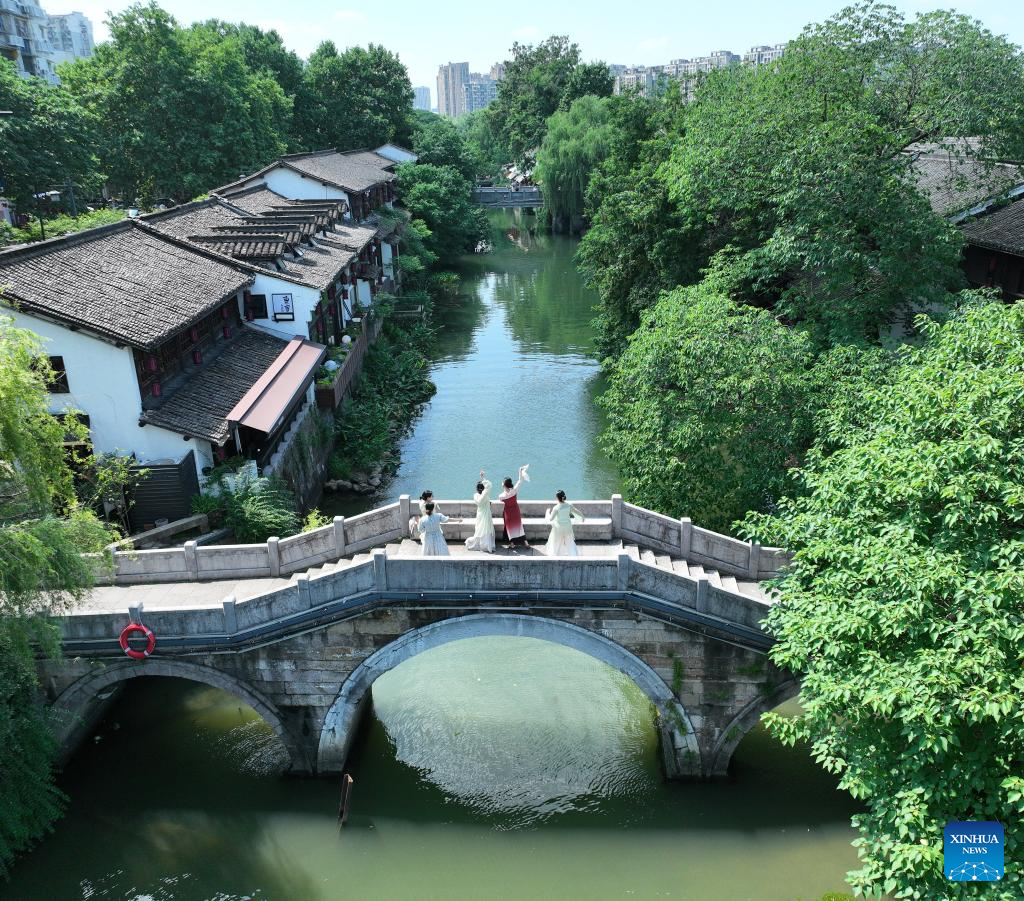
An aerial drone photo taken on June 12, 2024 shows tourists visiting Xiaohezhi Street historical and cultural block along the Grand Canal in Hangzhou, east China's Zhejiang Province. With a history of more than 2,500 years, the Grand Canal, connecting Beijing and Hangzhou in east China's Zhejiang Province, served as a significant transportation artery in ancient China. The canal was listed as a UNESCO World Heritage Site in China in June 2014.
Recent years, local authorities have prioritized the protection of the site while continuously promoting the protection of cultural heritage, the reuse of industrial relics and the inheritance of intangible heritage culture, gradually building the bank area of the Grand Canal into a region featuring rich culture, nice environment and thriving tourism. (Xinhua/Weng Xinyang)
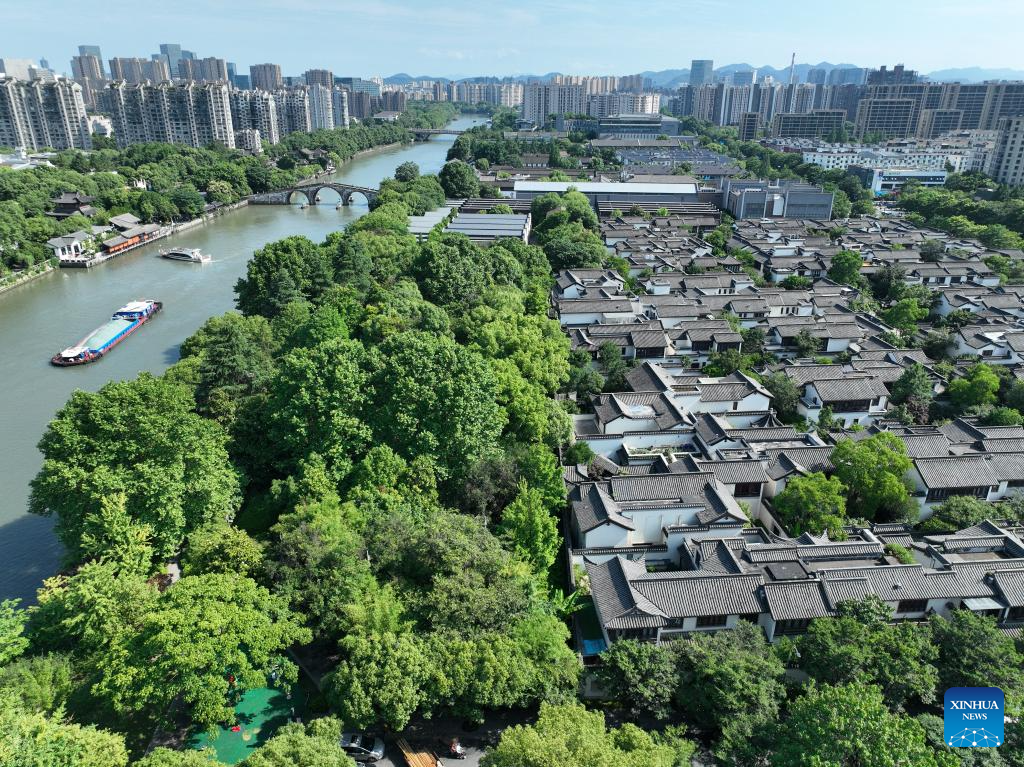
An aerial drone photo taken on June 12, 2024 shows a view of Qiaoxi historical and cultural block along the Grand Canal in Hangzhou, east China's Zhejiang Province. With a history of more than 2,500 years, the Grand Canal, connecting Beijing and Hangzhou in east China's Zhejiang Province, served as a significant transportation artery in ancient China. The canal was listed as a UNESCO World Heritage Site in China in June 2014.
Recent years, local authorities have prioritized the protection of the site while continuously promoting the protection of cultural heritage, the reuse of industrial relics and the inheritance of intangible heritage culture, gradually building the bank area of the Grand Canal into a region featuring rich culture, nice environment and thriving tourism. (Xinhua/Weng Xinyang)
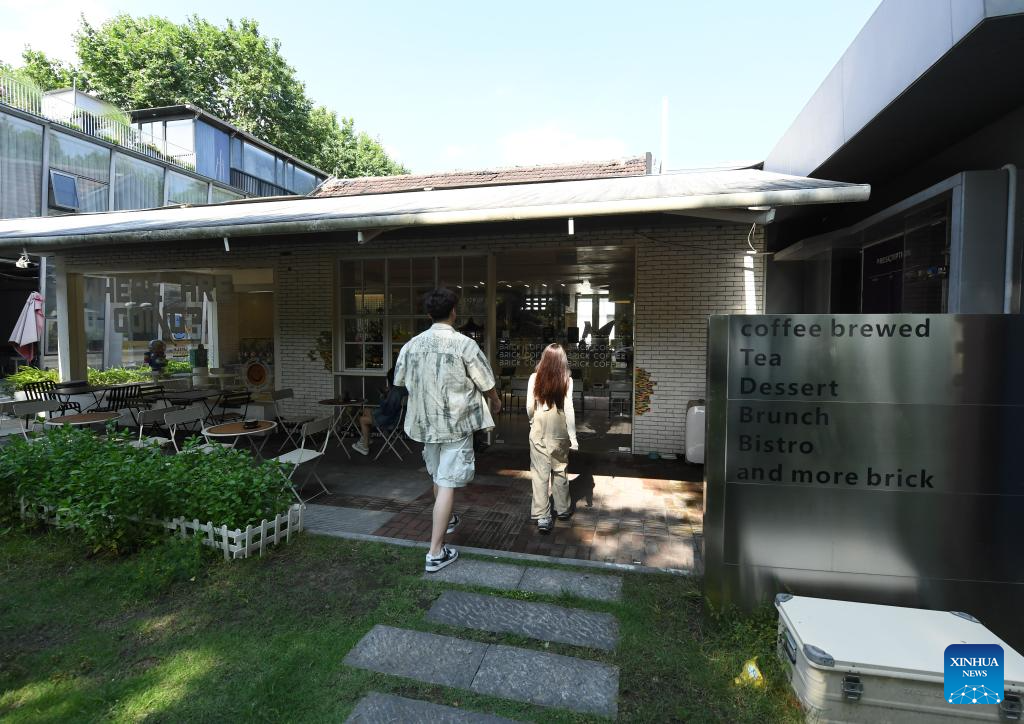
People walk into a cafe in Qiaoxi historical and cultural block along the Grand Canal in Hangzhou, east China's Zhejiang Province, June 12, 2024. With a history of more than 2,500 years, the Grand Canal, connecting Beijing and Hangzhou in east China's Zhejiang Province, served as a significant transportation artery in ancient China. The canal was listed as a UNESCO World Heritage Site in China in June 2014.
Recent years, local authorities have prioritized the protection of the site while continuously promoting the protection of cultural heritage, the reuse of industrial relics and the inheritance of intangible heritage culture, gradually building the bank area of the Grand Canal into a region featuring rich culture, nice environment and thriving tourism. (Xinhua/Weng Xinyang)
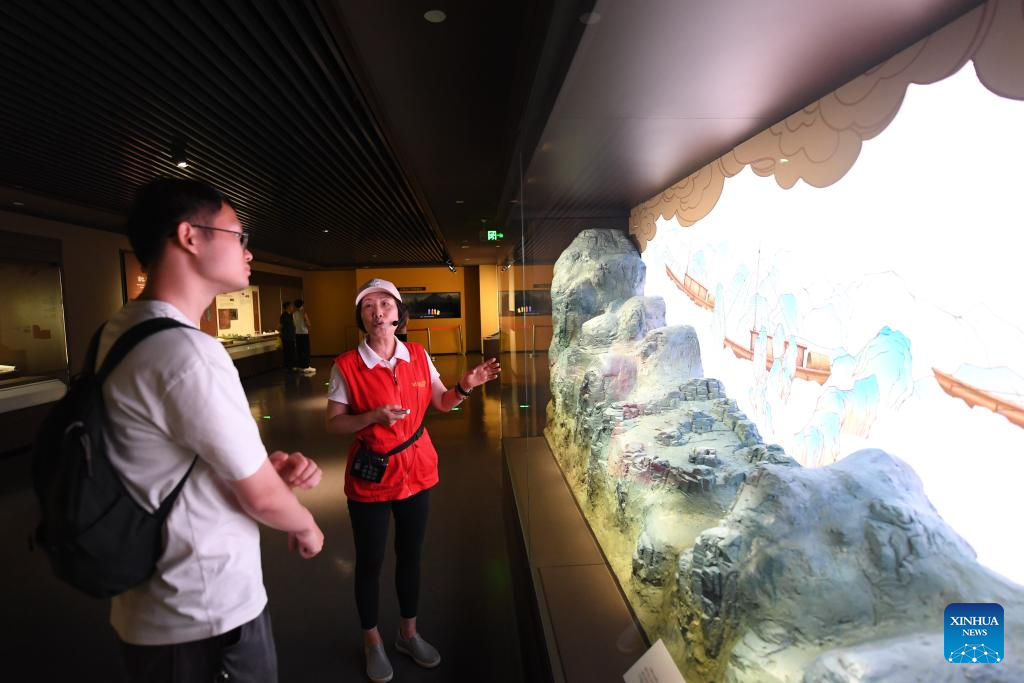
A man visits the Beijing-Hangzhou Grand Canal Museum in Hangzhou, east China's Zhejiang Province, June 12, 2024. With a history of more than 2,500 years, the Grand Canal, connecting Beijing and Hangzhou in east China's Zhejiang Province, served as a significant transportation artery in ancient China. The canal was listed as a UNESCO World Heritage Site in China in June 2014.
Recent years, local authorities have prioritized the protection of the site while continuously promoting the protection of cultural heritage, the reuse of industrial relics and the inheritance of intangible heritage culture, gradually building the bank area of the Grand Canal into a region featuring rich culture, nice environment and thriving tourism. (Xinhua/Weng Xinyang)
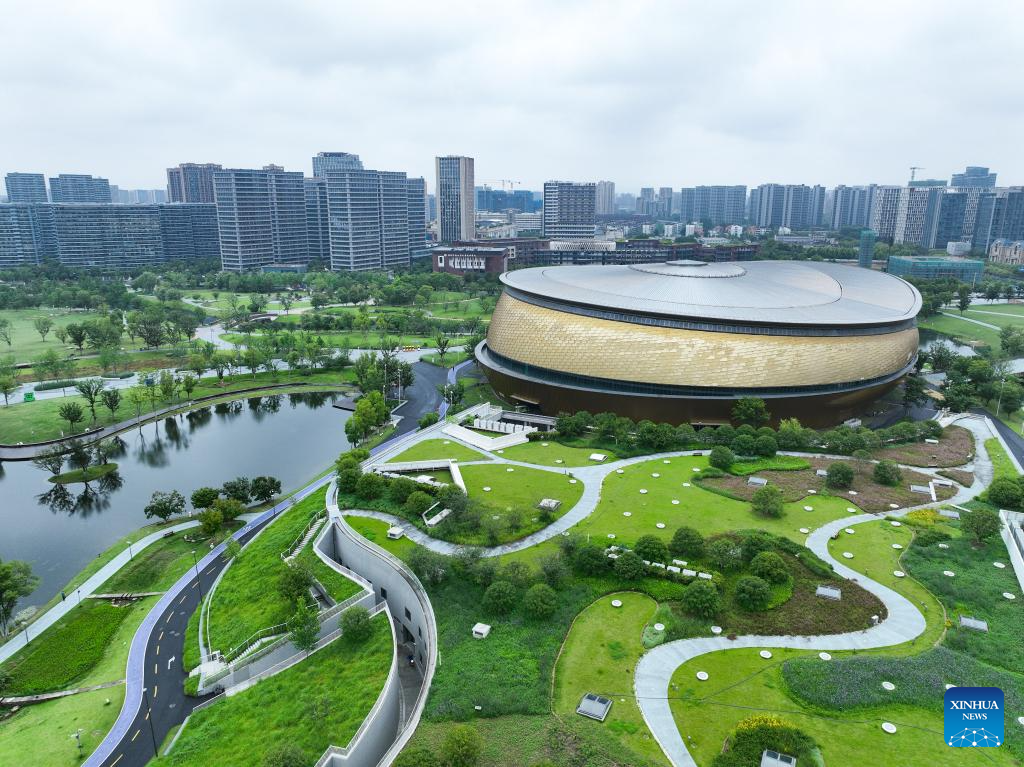
An aerial drone photo taken on June 12, 2024 shows the Gongshu Canal Sports Park Gymnasium in Hangzhou, east China's Zhejiang Province. With a history of more than 2,500 years, the Grand Canal, connecting Beijing and Hangzhou in east China's Zhejiang Province, served as a significant transportation artery in ancient China. The canal was listed as a UNESCO World Heritage Site in China in June 2014.
Recent years, local authorities have prioritized the protection of the site while continuously promoting the protection of cultural heritage, the reuse of industrial relics and the inheritance of intangible heritage culture, gradually building the bank area of the Grand Canal into a region featuring rich culture, nice environment and thriving tourism. (Xinhua/Weng Xinyang)
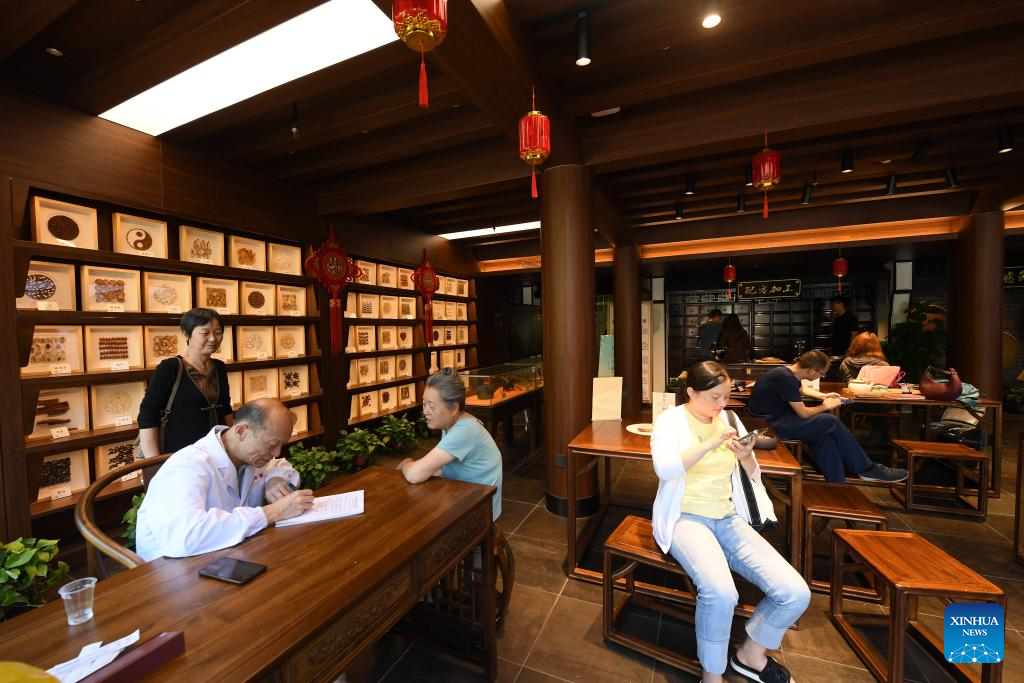
People wait to see doctor at a traditional Chinese medicine clinic in Qiaoxi historical and cultural block along the Grand Canal in Hangzhou, east China's Zhejiang Province, June 12, 2024. With a history of more than 2,500 years, the Grand Canal, connecting Beijing and Hangzhou in east China's Zhejiang Province, served as a significant transportation artery in ancient China. The canal was listed as a UNESCO World Heritage Site in China in June 2014.
Recent years, local authorities have prioritized the protection of the site while continuously promoting the protection of cultural heritage, the reuse of industrial relics and the inheritance of intangible heritage culture, gradually building the bank area of the Grand Canal into a region featuring rich culture, nice environment and thriving tourism. (Xinhua/Weng Xinyang)
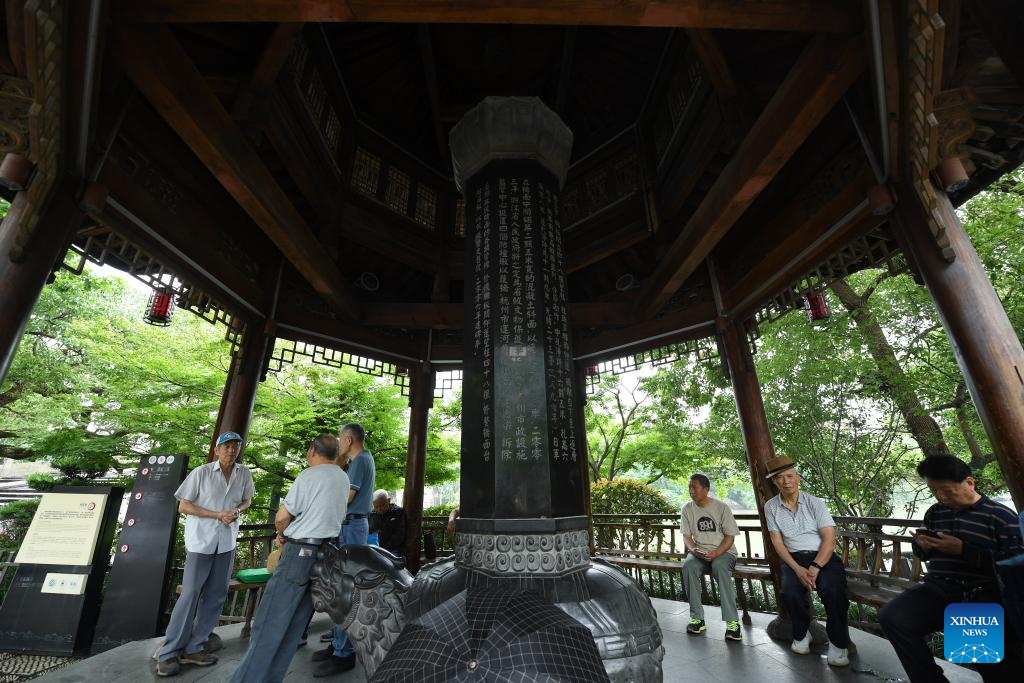
People rest at a pavilion beside the Gongchen Bridge over the Grand Canal in east China's Zhejiang Province, June 12, 2024. With a history of more than 2,500 years, the Grand Canal, connecting Beijing and Hangzhou in east China's Zhejiang Province, served as a significant transportation artery in ancient China. The canal was listed as a UNESCO World Heritage Site in China in June 2014.
Recent years, local authorities have prioritized the protection of the site while continuously promoting the protection of cultural heritage, the reuse of industrial relics and the inheritance of intangible heritage culture, gradually building the bank area of the Grand Canal into a region featuring rich culture, nice environment and thriving tourism. (Xinhua/Weng Xinyang)
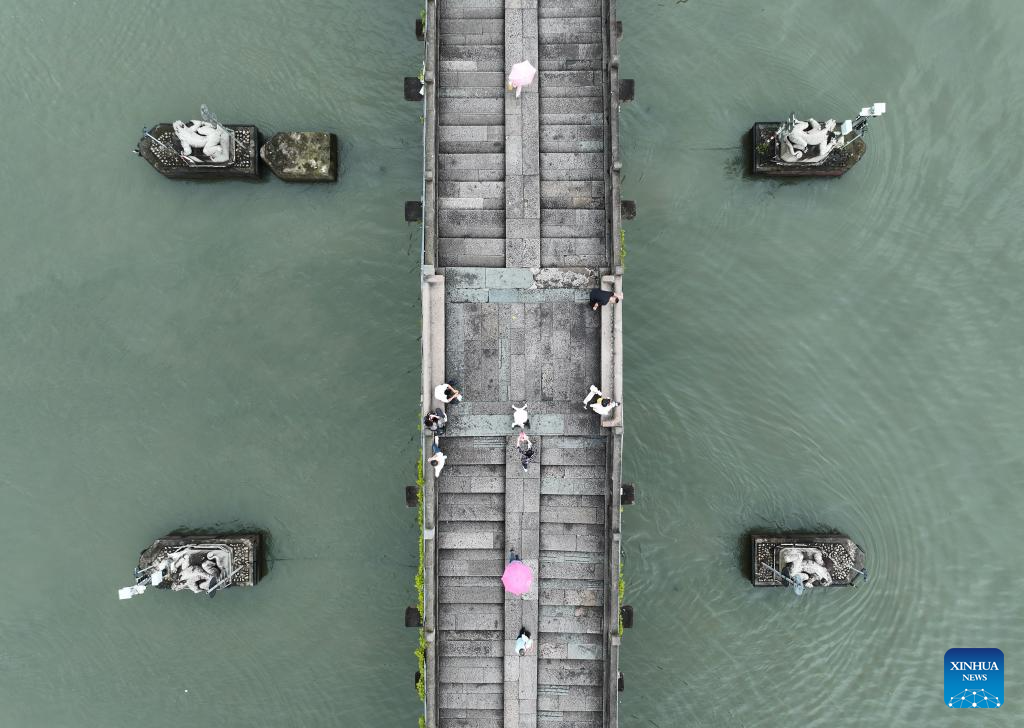
An aerial drone photo taken on June 12, 2024 shows the Gongchen Bridge over the Grand Canal in Hangzhou, east China's Zhejiang Province. With a history of more than 2,500 years, the Grand Canal, connecting Beijing and Hangzhou in east China's Zhejiang Province, served as a significant transportation artery in ancient China. The canal was listed as a UNESCO World Heritage Site in China in June 2014.
Recent years, local authorities have prioritized the protection of the site while continuously promoting the protection of cultural heritage, the reuse of industrial relics and the inheritance of intangible heritage culture, gradually building the bank area of the Grand Canal into a region featuring rich culture, nice environment and thriving tourism. (Xinhua/Weng Xinyang)
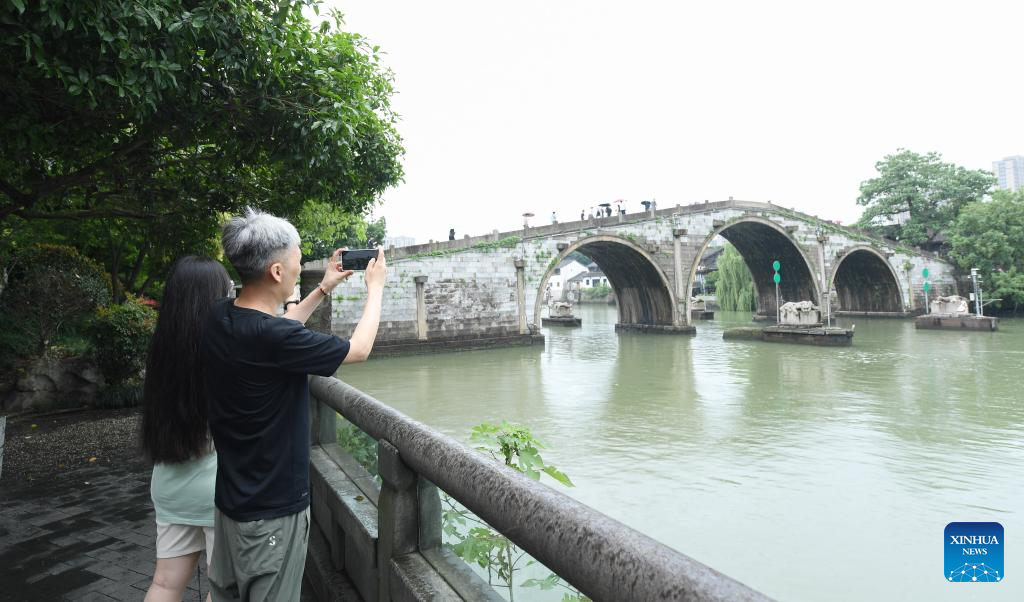
Visitors take photos of the Gongchen Bridge over the Grand Canal in Hangzhou, east China's Zhejiang Province, June 12, 2024. With a history of more than 2,500 years, the Grand Canal, connecting Beijing and Hangzhou in east China's Zhejiang Province, served as a significant transportation artery in ancient China. The canal was listed as a UNESCO World Heritage Site in China in June 2014.
Recent years, local authorities have prioritized the protection of the site while continuously promoting the protection of cultural heritage, the reuse of industrial relics and the inheritance of intangible heritage culture, gradually building the bank area of the Grand Canal into a region featuring rich culture, nice environment and thriving tourism. (Xinhua/Weng Xinyang)
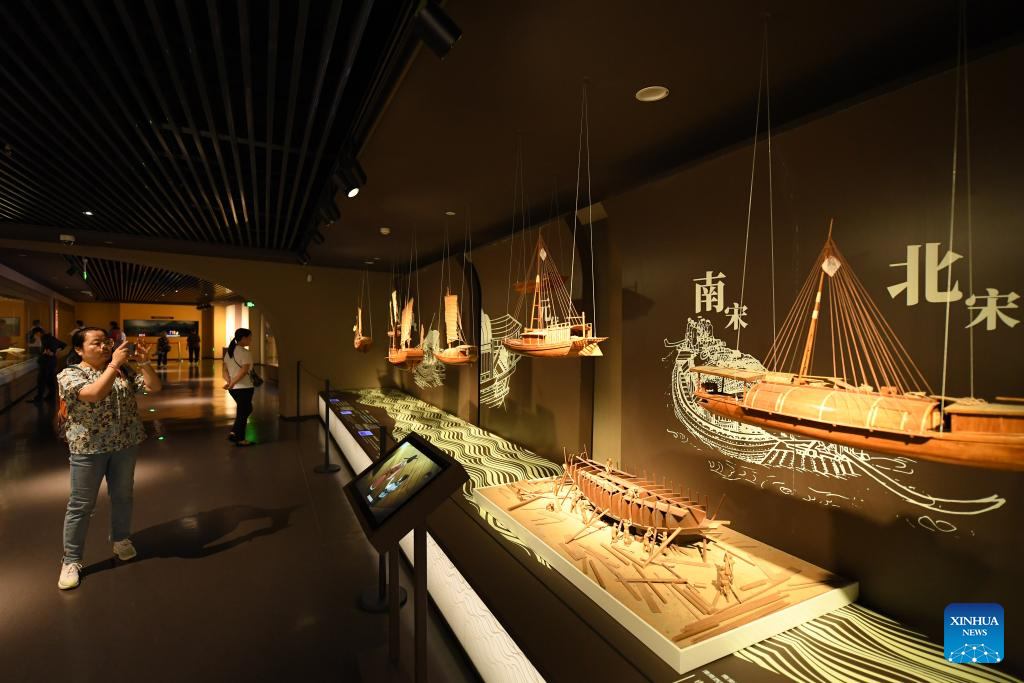
People visit the Beijing-Hangzhou Grand Canal Museum in Hangzhou, east China's Zhejiang Province, June 12, 2024. With a history of more than 2,500 years, the Grand Canal, connecting Beijing and Hangzhou in east China's Zhejiang Province, served as a significant transportation artery in ancient China. The canal was listed as a UNESCO World Heritage Site in China in June 2014.
Recent years, local authorities have prioritized the protection of the site while continuously promoting the protection of cultural heritage, the reuse of industrial relics and the inheritance of intangible heritage culture, gradually building the bank area of the Grand Canal into a region featuring rich culture, nice environment and thriving tourism. (Xinhua/Weng Xinyang)
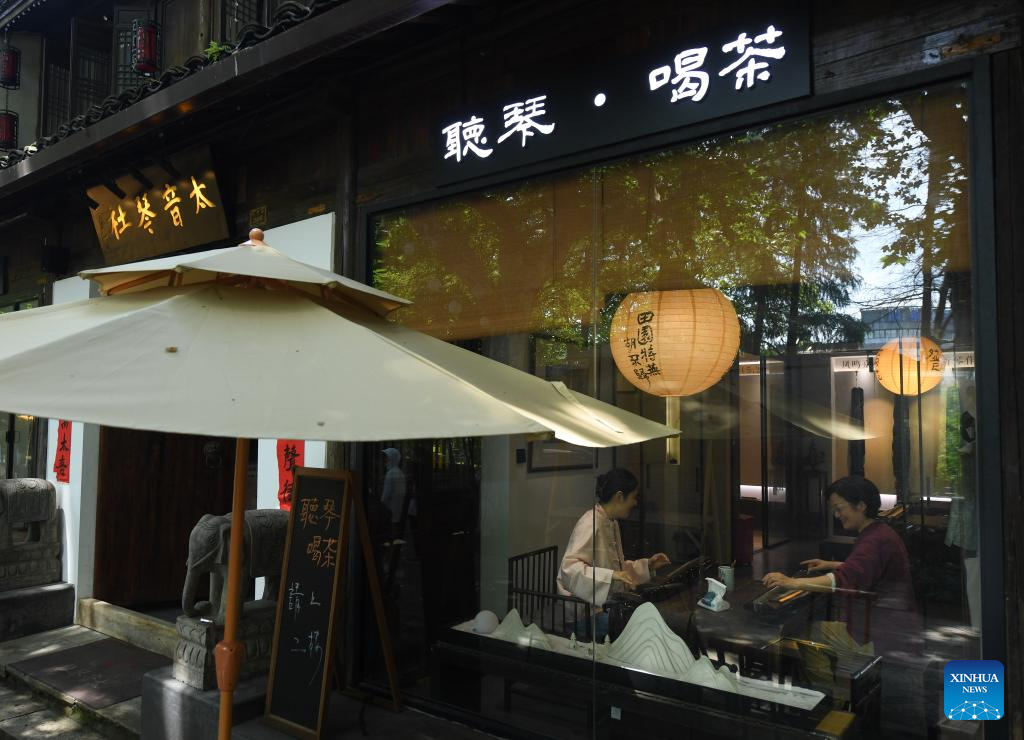
A teacher plays guqin, a plucked seven-string traditional Chinese musical instrument, with her student at a studio in Dadou Street historical and cultural block along the Grand Canal in Hangzhou, east China's Zhejiang Province, June 12, 2024. With a history of more than 2,500 years, the Grand Canal, connecting Beijing and Hangzhou in east China's Zhejiang Province, served as a significant transportation artery in ancient China. The canal was listed as a UNESCO World Heritage Site in China in June 2014.
Recent years, local authorities have prioritized the protection of the site while continuously promoting the protection of cultural heritage, the reuse of industrial relics and the inheritance of intangible heritage culture, gradually building the bank area of the Grand Canal into a region featuring rich culture, nice environment and thriving tourism. (Xinhua/Weng Xinyang)
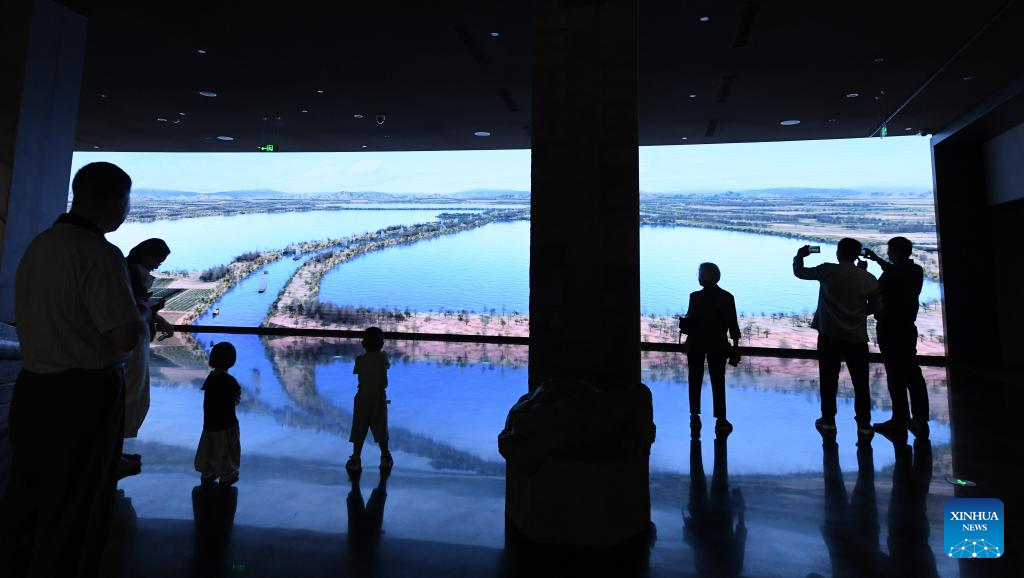
People visit the Beijing-Hangzhou Grand Canal Museum in Hangzhou, east China's Zhejiang Province, June 12, 2024. With a history of more than 2,500 years, the Grand Canal, connecting Beijing and Hangzhou in east China's Zhejiang Province, served as a significant transportation artery in ancient China. The canal was listed as a UNESCO World Heritage Site in China in June 2014.
Recent years, local authorities have prioritized the protection of the site while continuously promoting the protection of cultural heritage, the reuse of industrial relics and the inheritance of intangible heritage culture, gradually building the bank area of the Grand Canal into a region featuring rich culture, nice environment and thriving tourism. (Xinhua/Weng Xinyang)

Artist Zhang Tiantian works on a watercolor painting depicting a scene along the Grand Canal at a studio in Xiaohezhi Street historical and cultural block along the Grand Canal in Hangzhou, east China's Zhejiang Province, June 12, 2024. With a history of more than 2,500 years, the Grand Canal, connecting Beijing and Hangzhou in east China's Zhejiang Province, served as a significant transportation artery in ancient China. The canal was listed as a UNESCO World Heritage Site in China in June 2014.
Recent years, local authorities have prioritized the protection of the site while continuously promoting the protection of cultural heritage, the reuse of industrial relics and the inheritance of intangible heritage culture, gradually building the bank area of the Grand Canal into a region featuring rich culture, nice environment and thriving tourism. (Xinhua/Weng Xinyang)
点击右上角![]() 微信好友
微信好友
 朋友圈
朋友圈

请使用浏览器分享功能进行分享
